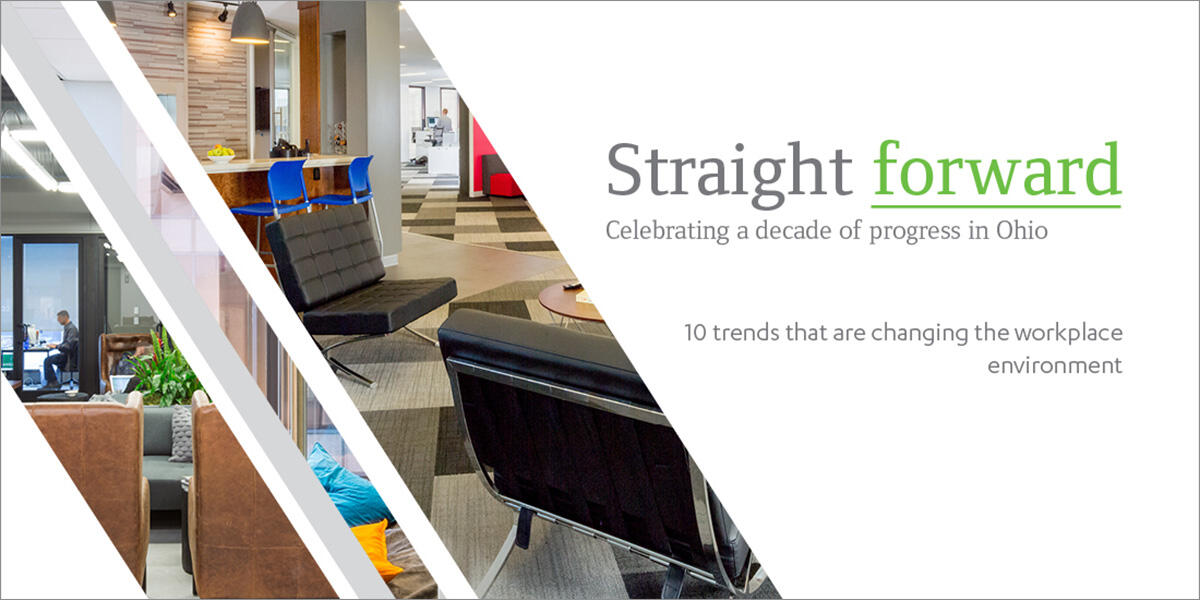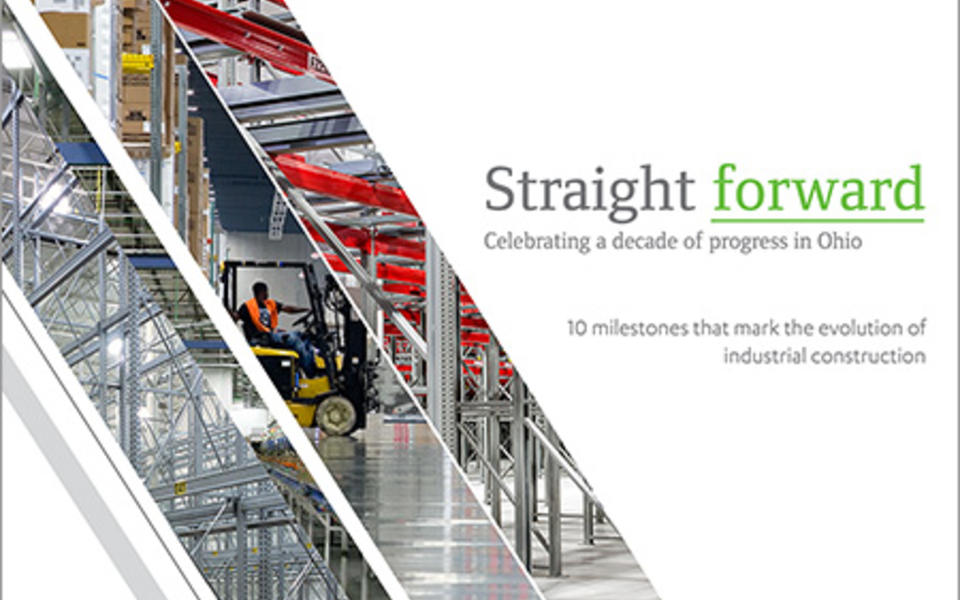Ohio 10th anniversary
In the past five years, Pepper has worked on more than $500 million in commercial office projects. We have worked with a range of clients, from Fortune 500 companies to young tech companies, and from traditional, class A office space to co-location space. While each space is a unique reflection of the company and the people they employ, we have seen 10 trends emerge that have re-defined today’s workplace.
01. Mobile workforce
In the world in which we live today, people’s lives are growing increasingly busy. Rising demands on the workforce have made working remotely a more desirable option. According to Global Workplace Analytics, 80-90 percent of the workforce wishes to work remotely at least part-time and 50 percent of the workforce is currently working remotely in some capacity. Cloud and web-based software is changing the workplace as we know it, making it easier for employees to work wherever they wish. Less space is dedicated to on-site data storage, with more wireless technology to meet the needs of employees. Occupancy counts have gone up as employees require less space because they are more efficient with how it is used.
02. Resiliency
Studies have shown our environment affects our health and productivity. As employers begin to understand the implications of their buildings on their people, they are making decisions about the materials and systems that optimize both their buildings and the people that work there. That means specifying healthier materials for the benefits of the employees and as good stewards of the environment.
03. Bringing nature indoors
From natural lighting to garden rooms, offices are incorporating natural elements into the design of the workplace. The example below is from one of our clients in downtown Columbus. They created a garden conference room where employees chose the plants they wanted to grow. Bringing natural elements into the workplace is inexpensive and just another way employers are investing in their staff.
04. Lifestyle amenities
To attract and retain top talent, employers are incorporating more lifestyle amenities into the workplace. Amenities vary based on employee preferences, with many offices now including outdoor break areas, child-friendly spaces, music and creative rooms, game rooms and more. This introduction of amenities in the workplace makes it even more important that both the design and construction team understand the clients’ vision and work together to align it with the budget and delivery.
05. Modular systems
Newer designs with modular walls, flooring, and furniture allow for more flexible work spaces that are more permanent and private than workstations and can still be reconfigured over time. These systems may present a higher upfront cost but the life cycle costs have proven to be significantly lower because of the ability to re-configure the space. It is becoming more common for the construction team to become involved early on during the design phase to help analyze the initial and life cycle costs.
06. Productivity studies
Temperature, lighting, color, and noise are all factors that can affect the productivity of a workplace. All of these factors are now being closely studied to find the perfect balance of each in an office space. For example, according to HOK Design, there is a 1-2 percent drop in performance for every 1.8 degree Fahrenheit above or below the ideal temperature of 70.88 degrees Fahrenheit. As LED lighting becomes standard, scientists are studying circadian rhythm and are testing different colors and how they affect performance. Owners tend to spend money to upgrade lighting because they recognize the important role it plays on performance.
07. Collaborative spaces
Whether an open floor concept, huddle areas, small conference space or cafeteria areas, workplace design has evolved to better reflect the collaborative style of the emerging workforce. Sometimes these spaces include creative elements to encourage brainstorming and creativity. This trend towards collaborative spaces is causing significant changes in how design and construction teams look at the program and space layout during the design phase.
08. Wellness lifestyle
Standing desks, balancing ball chairs, mini elliptical machines, treadmill desks, and entire workout facilities are just some of the options being offered to employees in the workplace. With it getting more difficult to find time outside of the work day, employees are seeking unique ways to stay active in the office. An active working environment helps stimulate creativity and increases productivity for workers, as well as providing a healthier workplace. Costs range from portable equipment on the low end all the way up to investing in an entire workout facility.
09. Employee personalization
The workforce is becoming more personally connected to the work they do, and for many, the office is a second home. Employers are finding ways to help strengthen this connection by allowing employees to personalize the space in which they work. Even those with an open, shared space design can find ways to allow for personalization. In the image below, our client furnished the walls using employees’ photos.
10. Culture centric design
We are going away from traditional office design centered around executive offices and cubical suites. This forces the construction team to step out of the box from conventional construction practices and embrace modern workplace solutions. Workplace design has evolved to be entirely built upon understanding the culture of a business and the needs of their workforce. Construction partners can support this process by providing accurate cost estimates and analyzing life cycle costs to help clients prioritize their needs and principles.




